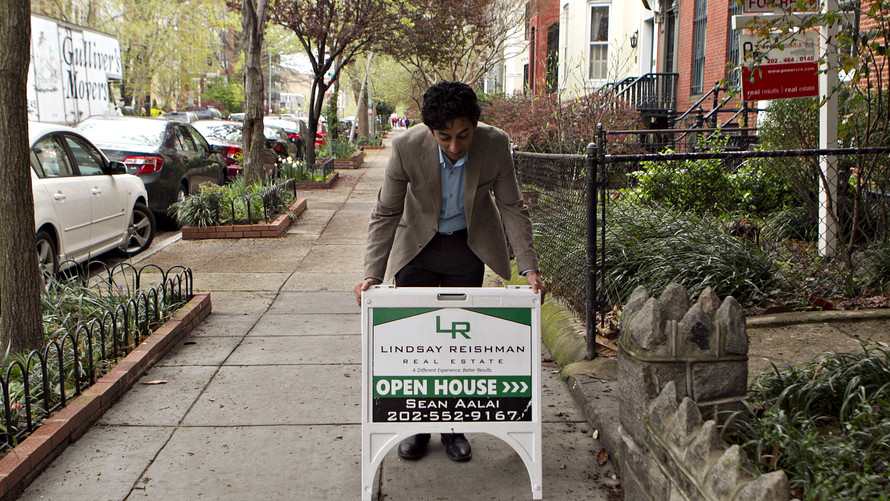
Welcome to 2018, where realtors are the new telemarketers: If you’re like me, you get a couple of calls a week, not looking to sell you a house, but looking for houses to sell. That’s because the real estate market is (exaggerating slightly) as bare of inventory as the shelves of a former Soviet Union grocery store, to hear builders and realtors tell it.
Good for you, if you’re one of the relatively few people who want to sell a house right now. Short supply means higher prices even without white-hot demand. But it’s a bad thing for the economy, and illustrates a big — maybe the biggest — kitchen-table budget reason why the Federal Reserve would be wise to be careful and slow about raising interest rates more.
The new watchword is “rate lock” — the idea that people who would move up to a bigger house might tolerate a higher price, but balk at a higher interest rate. Throw in higher property taxes that come with a bigger house, and you have three financial barriers to people moving up, instead of the usual two. Add the wage stagnation of the last year, driven by an uptick in inflation traceable to higher oil prices, and you see why new-home sales have slowed in the last few months and why existing-home sales fallen 1.5% year-to-date.
“Rising mortgage interest rates and record-high prices are putting a squeeze on affordability, especially in some higher-priced markets,” economists at real-estate Web site Zillow said this week.
The numbers are actually pretty stark: According to Grant Thornton, the income needed to buy the median home has increased by 11.6% percent in the last year, while median family incomes have risen only about 2.8%.
Here’s how it looks on paper. Let’s say you refinanced in 2015: Interest rates were running about 2.875% then for 15-year mortgages or the seven-year adjustable-rate mortgages like the one I took out then to lock in a low rate and put in a kitchen and other upgrades.
If you’re sitting on a $350,000 mortgage, not unusual in most of the country, that rate puts your monthly mortgage payment (principal and interest) just above $1,450 a month. The average property tax in America, according to a 2017 study, is $1.15 of every $100 of a home’s value. So if that mortgage is on a $400,000 house, that would work out to about $4,600 in property taxes, a little under $400 a month.
Now let’s say that homeowner wants to move to a $600,000 house with a $500,000 loan. At 2.875%, if our home buyers kept their old interest rate, the principal and interest payment on a 30-year loan works out to $2,074 a month, and their tax bill (at $1.15 per $100) goes to $575 a month.
But if the interest rate chosen is the current 30-year rate of 4.5%, those same buyers are looking at a P&I of $2,450. Just the difference in the rate adds $4,536 a year to the budget. The combination of the bigger loan and higher rate adds about $12,000, plus a couple of grand for taxes.
Now do you see why more people are staying put?
What can policy makers do about this? The first move would be to promote lower oil prices to ease pressure on real wages, but the Trump administration is pushing in the opposite direction. Sanctions against Iran, re-imposed by Trump, are designed to take more than 2 million barrels of crude oil day off the world market beginning this fall. Whether this was a good idea overall or not, it feeds inflation and presses the Fed to raise interest rates faster. So do last fall’s big boost in spending and the 2017 tax cut.
What will this do to the economy? Housing’s weakness is central to the case that the expansion may be ending sooner than we think, but the softening we’ve seen doesn’t prove that. It does point to a cresting of housing construction and sales about where they are now, at less than half the new-home building pace of the last decade’s peak and almost a quarter below 2005 existing-home sales. When you’re selling the same number of new homes as in 1973, and the population is 100 million people bigger, something’s not great.
All this means less work and income for Americans involved in housing, and slightly less activity and job growth overall. After all, 750,000 people work in housing construction, more than 1 million have real-estate licenses and millions more help produce lumber and fixtures, write mortgages, do renovation and so on.
Higher rates increasingly point to stagnation and torpor in the sector, one big enough to affect everyone else.
Another option is to pull mortgage rates lower — as private markets have done since May even as the Fed indicates it will raise interest rates it controls at its September and December meetings, by a total of half of a percentage point.
The Fed’s moves would add another two grand a year to mortgage payments, if policy rate hikes flowed through to mortgages. That means more homeowners will stay put, and realtors with clients who need to buy will be dialing for inventory all the more.

